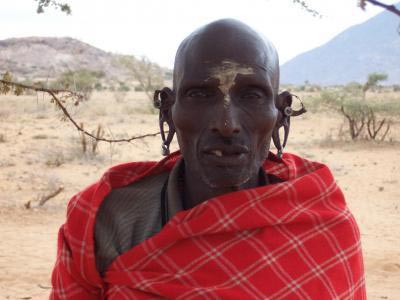Is ADHD an advantage of nomadic tribes?
According to a new study, attention-deficit hyperactivity disorder (ADHD) may be useful for Kenyan nomads. Scientists have demonstrated that ADHD-related DRD4 gene versions help nomadic tribes become healthier but cause malnutrition in their settled relatives.
Dan Eisenberg - anthropology graduate student at Northwestern University in the United States - conducted a study analyzing the correlation between body weight index (BMI) with two genotypes of dopamine-receiving genes. especially the repeating form of 48 base pairs in the D4 gene receiving dopamine (DRD4).
Gen DRD4 encodes the receptor of dopamine - one of the chemical messages used in the brain. According to Eisenberg, 'this gene is involved in nerve impulses, reward activity and addiction'. A version of the DRD4 gene is '7R allele' that is associated with appetite as well as ADHD. When studying Ariaal adult adults in Kenya (some of them live in nomadic life and others are new to settling down), the team investigated whether this relationship was maintained in environmental conditions. different school or not.

A ethnic minority nomad.(Photo: Jason Radak)
Those with DRD4 / 7R alleles in the nomadic community are nurtured better than those with the same DRD4 / 7R allele in the settled community. Although the impact of the different version of dopamine has recently been studied in industrialized countries, very few studies have been conducted in non-industrial countries, or living conditions such as the Ariaal region being born. living when such environments can have many similarities with the environment that most human genetic evolution occurs.
Eisenberg explains: 'Alen DRD4 / 7R is related to the feeling of craving for food and drugs, looking for novelty as well as ADHD symptoms. Perhaps in a nomadic environment, a boy with this gene will be able to effectively protect pets in front of raiders or protect local water and food. But the above capacity will not be as effective as that for settling occupations such as teaching, farming or sales. '
Research results show that behavioral differences such as ADHD are related to more or less DRD4 genes depending on the environment. Researching how it happens to Ariaal children will be conducted in the near future.
Reference article:
Dan TA Eisenberg, Benjamin Campbell, Peter B. Gray and Michael D. Sorenson. Genetic Dopamine receptor polymorphisms and body composition in undernourished pastoralists: An exploration of nutrition indices among nomadic and recently administered Ariaal men of northern Kenya. BMC Evolutionary Biology, (in press)
- The life of no money, no technology of tribes in the Himalayas
- New method of diagnosing ADHD in children
- Mysterious carvings on stone
- Explore the mysterious snake tribe in India
- Boys with hyperactivity disorder reduce attention and are prone to obesity
- Palace of 1,000 years of the Khin dynasty in China
- ADHD is caused by genetic disorders
- Discover the tribe raising animals with human milk
- Mysterious tribes in Ethiopia
- Tribal mystery isolates itself from the world by ... killing strangers
- Impressive photos of the tribes that are about to disappear forever in the world
- The life of the Moken Sea nomads
 Why do potatoes have eyes?
Why do potatoes have eyes? 'Tragedy' the world's largest carnivorous life: Death becomes ... public toilet
'Tragedy' the world's largest carnivorous life: Death becomes ... public toilet Tomatoes were once considered 'poisonous' for 200 years
Tomatoes were once considered 'poisonous' for 200 years Detecting microscopic parasites on human face
Detecting microscopic parasites on human face